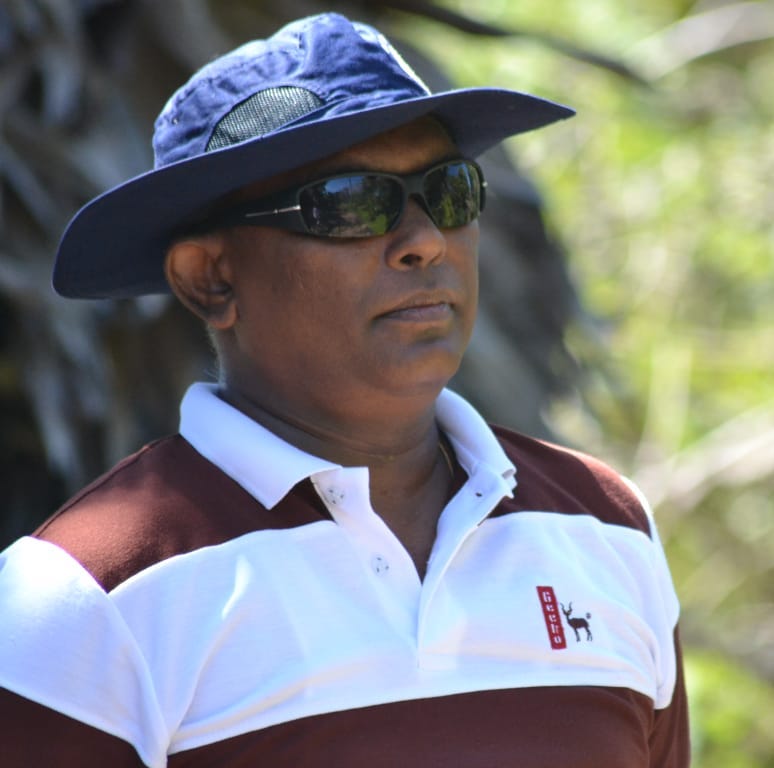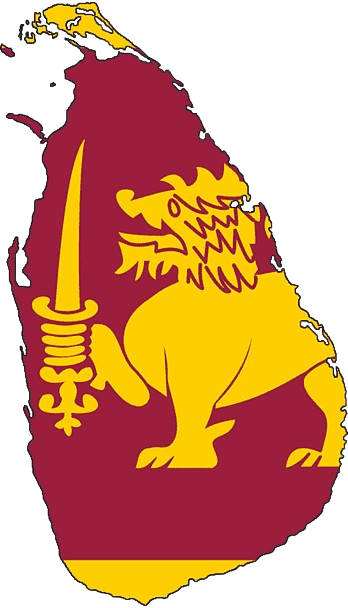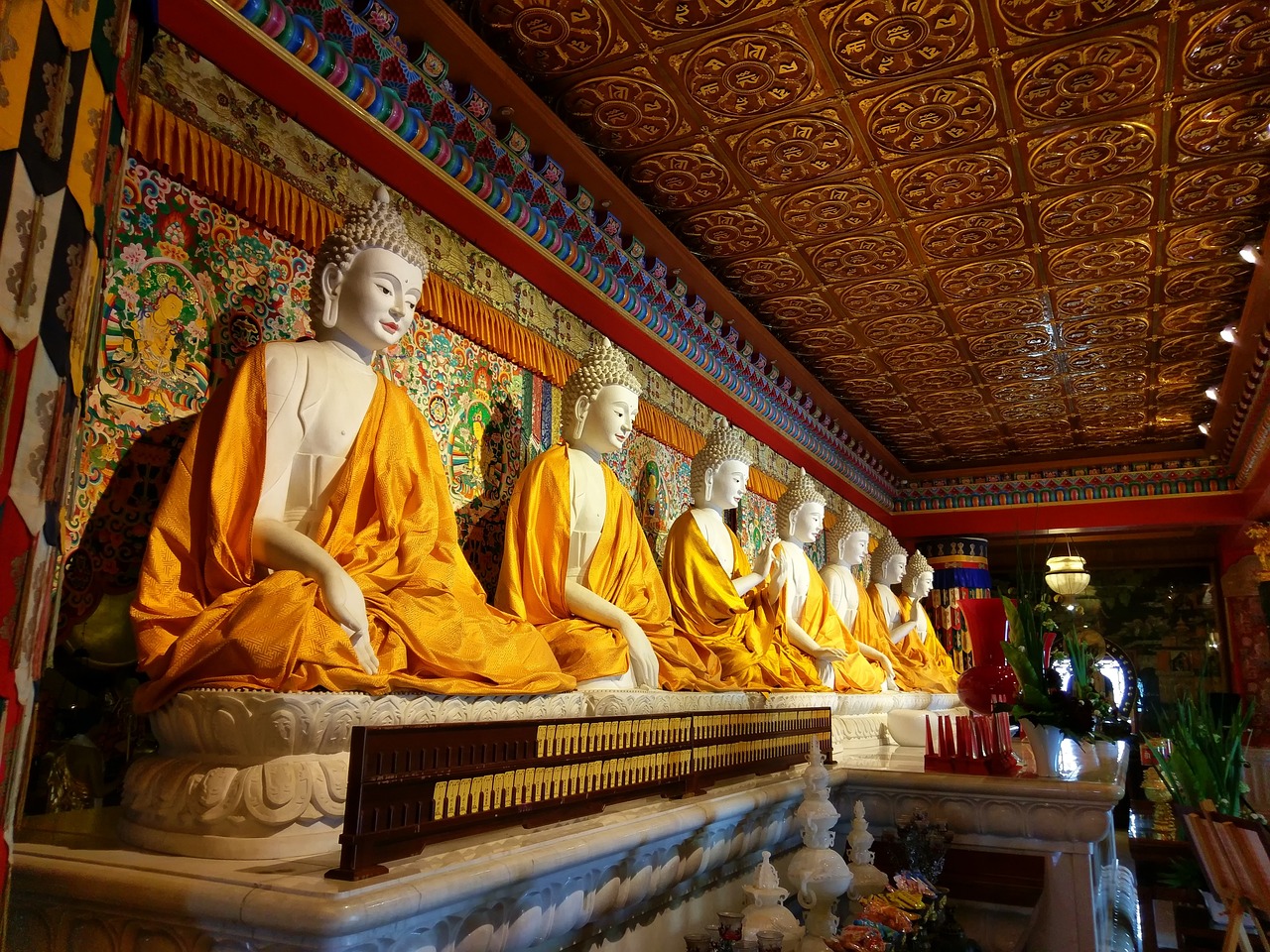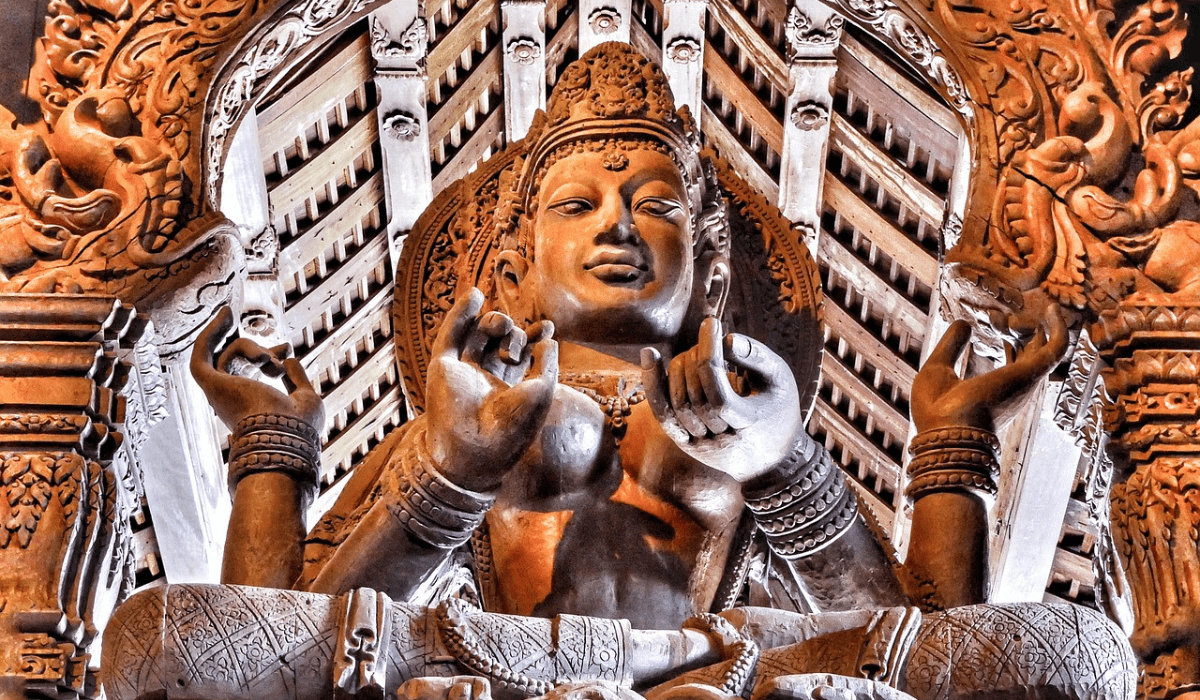Introduction
Sri Lanka, a teardrop-shaped island nestled in the Indian Ocean, is not only known for its stunning landscapes and rich cultural heritage but also for being one of the most significant centers of Theravada Buddhism in the world. The island’s serene environment, combined with its deep-rooted Buddhist traditions, offers visitors a unique opportunity to explore a living spiritual tradition that has shaped the country’s identity for over two millennia. Buddhism in Sri Lanka is more than just a religion; it is an integral part of the island’s social fabric, influencing everything from art and architecture to daily life and national celebrations.
Table of Contents
Historical Significance
Introduction of Buddhism to Sri Lanka
Buddhism was introduced to Sri Lanka in the 3rd century BCE, marking the beginning of a profound cultural transformation that would shape the island’s history. The arrival of Buddhism is closely tied to the Indian Emperor Ashoka, who, after embracing Buddhism, sent his son Arhant Mahinda to Sri Lanka to spread the teachings of the Buddha. This pivotal event occurred during the reign of King Devanampiya Tissa, who was deeply influenced by Arhant Mahinda’s teachings and converted to Buddhism, setting the stage for its widespread adoption across the island.
Arhant Mahinda and the Establishment of Buddhism
The legendary meeting between Arhant Mahinda and King Devanampiya Tissa on the sacred mountain of Mihintale is a cornerstone of Sri Lankan history. This encounter not only led to the king’s conversion but also to the establishment of Buddhism as the state religion. The royal court and the general population soon followed the king’s example, embracing the new faith and building monasteries, stupas, and other religious sites that have since become iconic symbols of Sri Lanka’s Buddhist heritage.
Preservation of Theravada Buddhism
Sri Lanka has played a crucial role in the preservation of Theravada Buddhism, particularly through the safeguarding of the Pali Canon, the collection of scriptures that form the foundation of Theravada doctrine. Over the centuries, Sri Lankan monks have compiled important commentaries and chronicles, such as the Mahavamsa, which have been instrumental in maintaining the integrity of Buddhist teachings. Moreover, Sri Lanka’s commitment to preserving Theravada Buddhism has had a profound influence on other Southeast Asian countries, helping to spread the tradition across the region.
Sacred Sites and Temples
Temple of the Sacred Tooth Relic (Sri Dalada Maligawa), Kandy
One of the most revered sites in Sri Lanka is the Temple of the Sacred Tooth Relic in Kandy, which houses a tooth relic of the Buddha. This relic is considered the most sacred object in Sri Lankan Buddhism and is a symbol of sovereignty. The temple’s architecture reflects the grandeur of Kandy’s royal heritage, with intricate woodwork, paintings, and golden adornments. The temple continues to play a central role in Sri Lankan Buddhism, hosting the annual Esala Perahera, a grand procession that attracts pilgrims and tourists from around the world.
Anuradhapura Ancient City
The ancient city of Anuradhapura, a UNESCO World Heritage site, is a treasure trove of Buddhist history. Among its many sacred sites is the Sri Maha Bodhi, a fig tree grown from a sapling of the original Bodhi tree under which the Buddha attained enlightenment. The Ruwanwelisaya Stupa, one of the most significant stupas in Sri Lanka, stands as a testament to the architectural and spiritual achievements of ancient Sri Lankan civilization. Other notable structures include the Jetavanaramaya, Thuparamaya, and Lovamahapaya, each with its unique history and religious significance.





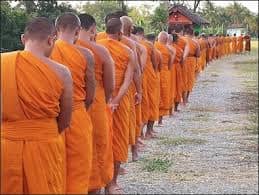

Polonnaruwa
Polonnaruwa, the second ancient capital of Sri Lanka, is renowned for its well-preserved ruins and Buddhist monuments. The Gal Vihara, a rock temple featuring large Buddha statues carved into granite, is a highlight of this historic city. The Lankathilaka Vihara is another remarkable site, known for its towering brick structure and intricate carvings. Polonnaruwa’s Buddhist heritage offers visitors a glimpse into the island’s medieval past and its continued devotion to Buddhist principles.
Dambulla Cave Temple
The Dambulla Cave Temple, also known as the Golden Temple of Dambulla, is one of the largest and best-preserved cave temple complexes in Sri Lanka. The temple consists of five main caves, each filled with Buddha statues, ancient paintings, and inscriptions that date back to the 1st century BCE. The cave walls are adorned with vibrant murals that depict scenes from the Buddha’s life, making it a site of immense artistic and religious significance.
Sri Lanka is home to numerous other sacred Buddhist sites, each with its unique history and significance. Mihintale, the birthplace of Buddhism in Sri Lanka, is a pilgrimage site that attracts thousands of devotees each year. The Kelaniya Raja Maha Vihara, believed to be visited by the Buddha during his third visit to the island, is another important temple known for its stunning murals. Adam’s Peak (Sri Pada) is a multi-faith pilgrimage site where Buddhists believe the Buddha left his footprint, making it a spiritually significant location for people of various religious traditions.
Buddhist Festivals and Traditions
Vesak Festival
The Vesak Festival is the most important Buddhist celebration in Sri Lanka, commemorating the birth, enlightenment, and passing of the Buddha. During Vesak, the island comes alive with vibrant lanterns, illuminated displays called pandols, and various acts of charity, known as almsgiving. Vesak is a time for reflection, spiritual renewal, and community bonding, and it holds a special place in Sri Lankan culture.
Poson Festival
The Poson Festival marks the arrival of Buddhism in Sri Lanka, and it is especially celebrated in Anuradhapura and Mihintale. The festival is characterized by processions, devotional songs, and the lighting of lanterns. Poson is a time for Sri Lankans to express their gratitude for the gift of Buddhism and to engage in various spiritual practices, including meditation and attending religious ceremonies.
Esala Perahera in Kandy
The Esala Perahera in Kandy is one of the most spectacular religious processions in Asia. It honors the Sacred Tooth Relic and includes a grand parade featuring traditional dancers, drummers, elephants adorned in lavish costumes, and torchbearers. The Perahera is not only a religious observance but also a cultural event that showcases Sri Lanka’s rich artistic and musical traditions.
Other Significant Observances
Sri Lanka’s Buddhist calendar is filled with other significant observances, such as the Duruthu Perahera, which celebrates the Buddha’s first visit to the island, and the Aluth Sahal Mangallaya (New Rice Festival), which is a harvest festival rooted in Buddhist thanksgiving traditions. The Navam Perahera is another important event that takes place in Colombo, featuring a colorful procession that highlights the diversity of Sri Lankan Buddhist practices.
Modern Buddhist Practices
Meditation Retreats
Sri Lanka is a popular destination for those seeking spiritual growth through meditation. The island is home to several renowned meditation centers that offer retreats in practices such as Vipassana (insight meditation) and Metta Bhavana (loving-kindness meditation). These retreats provide both locals and foreign visitors with the opportunity to deepen their meditation practice in serene and supportive environments.
Monastic Life
The Buddhist monastic order in Sri Lanka plays a vital role in preserving and teaching the Dharma. Monks and nuns adhere to a disciplined lifestyle, with daily routines that include meditation, scriptural study, and community service. Monasteries also serve as centers for education and social services, contributing to the well-being of the broader community.
Influence on Daily Life and Culture
Buddhist values permeate every aspect of Sri Lankan society, influencing everything from art and literature to architecture and daily customs. The teachings of the Buddha, particularly the emphasis on compassion, non-violence, and mindfulness, are reflected in the country’s cultural practices and social norms. Buddhism also plays a central role in national holidays and public observances, reinforcing its importance in the lives of Sri Lankans.
Experiencing Buddhism as a Visitor
Etiquette When Visiting Temples
Visitors to Sri Lanka’s Buddhist temples are encouraged to observe certain customs and etiquette to show respect for the sacred spaces. Appropriate dress code, which includes covering shoulders and knees, is essential. Visitors should also behave reverently, avoid pointing their feet at the Buddha statues, and refrain from loud conversations within temple grounds. Photography is generally allowed, but it’s important to ask for permission and avoid intrusive behavior.
Participating in Meditation Sessions
Many temples and meditation centers in Sri Lanka offer guided meditation sessions for visitors. These sessions provide an introduction to Buddhist meditation practices and allow participants to experience the tranquility and focus that meditation brings. Whether you are a seasoned practitioner or new to meditation, these sessions can be a meaningful addition to your travel experience.
Interacting with Monks and Learning About Their Way of Life
Visitors have the unique opportunity to engage with Buddhist monks, learn about their way of life, and attend Dharma talks (teachings). Monks are often open to dialogue, providing insights into Buddhist philosophy and practice. Participating in almsgiving ceremonies, where food and essentials are offered to monks, is another way to connect with the local community and contribute to the monastic order.
Buddhist-Themed Tours and Retreats
For those interested in a deeper exploration of Buddhism in Sri Lanka, there are organized pilgrimages to sacred sites, wellness retreats that incorporate Buddhist practices, and educational tours focusing on Buddhist history and philosophy. These experiences offer a structured way to immerse oneself in the spiritual and cultural richness of Sri Lanka.
Impact of Buddhism on Sri Lankan Art and Architecture
Traditional Art Forms
Buddhism has had a profound influence on Sri Lankan art, particularly in the realms of painting, sculpture, and statuary. Traditional art forms often depict scenes from the Buddha’s life, the Jataka tales, and other religious themes. The unique motifs and styles developed in Sri Lanka’s Buddhist art have become a defining feature of the island’s cultural identity.
Architectural Styles
Sri Lanka’s Buddhist architecture is characterized by its distinctive stupas, or dagobas, which have evolved in design over the centuries. The island’s temples, with their elaborate carvings, frescoes, and statues, reflect the deep reverence Sri Lankans have for the Buddha and his teachings. The influence of Buddhism can also be seen in secular architecture, where Buddhist symbols and motifs are often incorporated into the design.
Buddhism and Nature in Sri Lanka
Sacred Groves and Bodhi Trees
Nature holds a special place in Sri Lankan Buddhism, with many sacred groves and Bodhi trees revered for their spiritual significance. The Sri Maha Bodhi in Anuradhapura, believed to be a direct descendant of the original Bodhi tree, is one of the most sacred sites on the island. Conservation efforts in these areas are often guided by Buddhist principles, reflecting the interconnectedness of all life.
Buddhist Environmentalism
In modern times, Buddhism’s teachings on respect for all living beings have inspired environmental movements in Sri Lanka. Many temples and monasteries have adopted eco-friendly practices, such as organic farming, tree planting, and wildlife conservation. This modern interpretation of Buddhist teachings highlights the relevance of the Dharma in addressing contemporary global challenges.
Conclusion
Sri Lanka offers a unique opportunity to experience Buddhism in its most authentic and living form. The island’s rich Buddhist heritage, preserved through sacred sites, festivals, and daily practices, provides visitors with a profound spiritual journey. Whether you are exploring ancient temples, participating in meditation retreats, or engaging with local monks, Buddhism in Sri Lanka invites you to connect with a tradition that has shaped the island’s identity for over two thousand years. As you travel through this beautiful country, you will not only witness the beauty of its landscapes but also the enduring power of its spiritual legacy.
